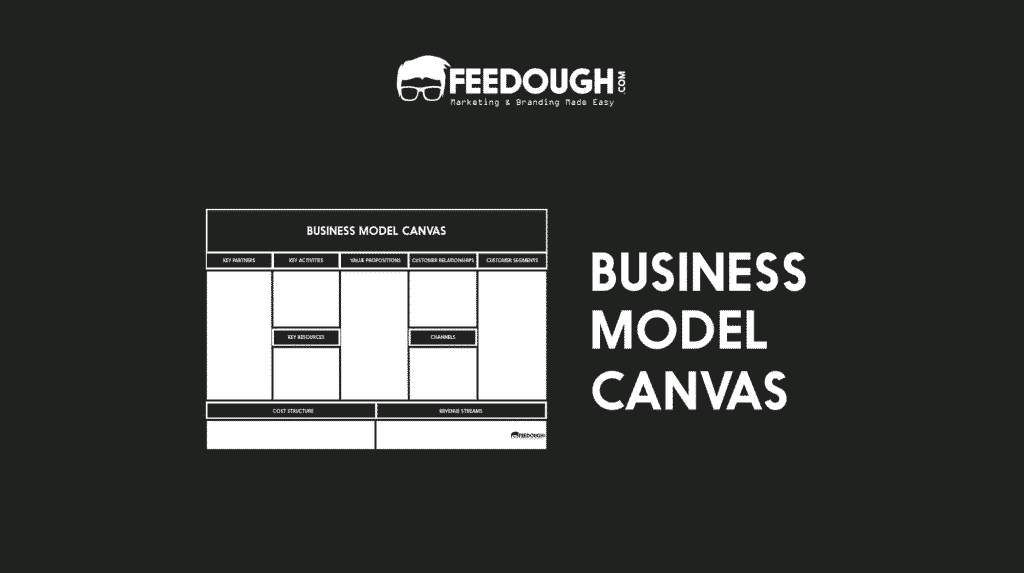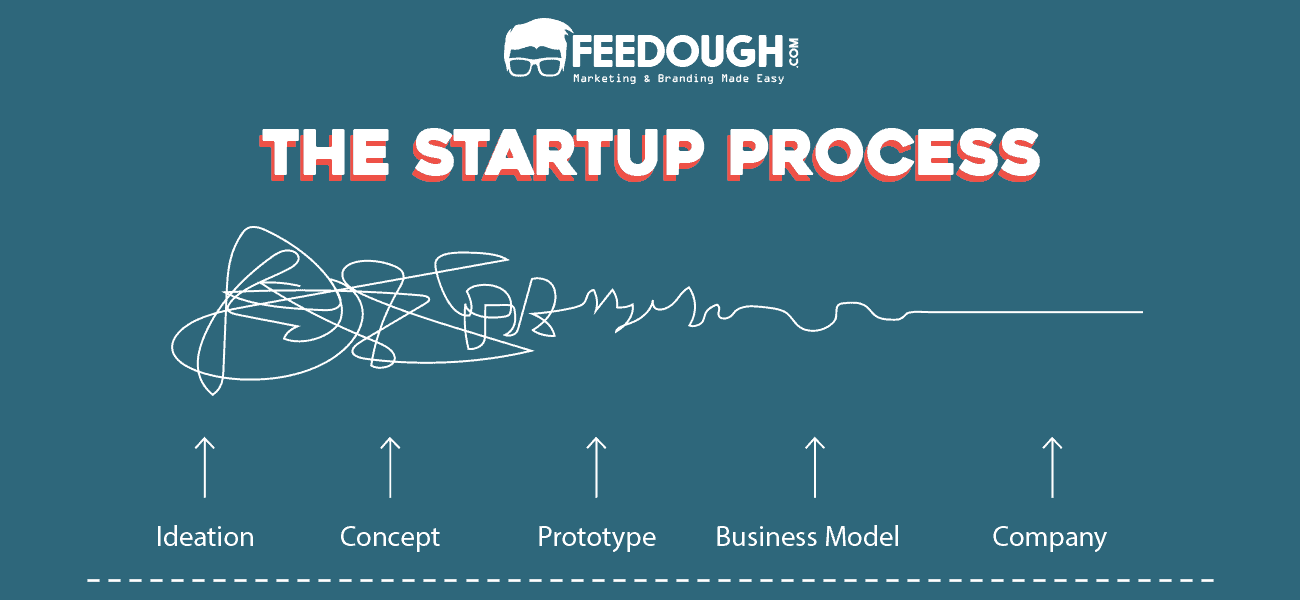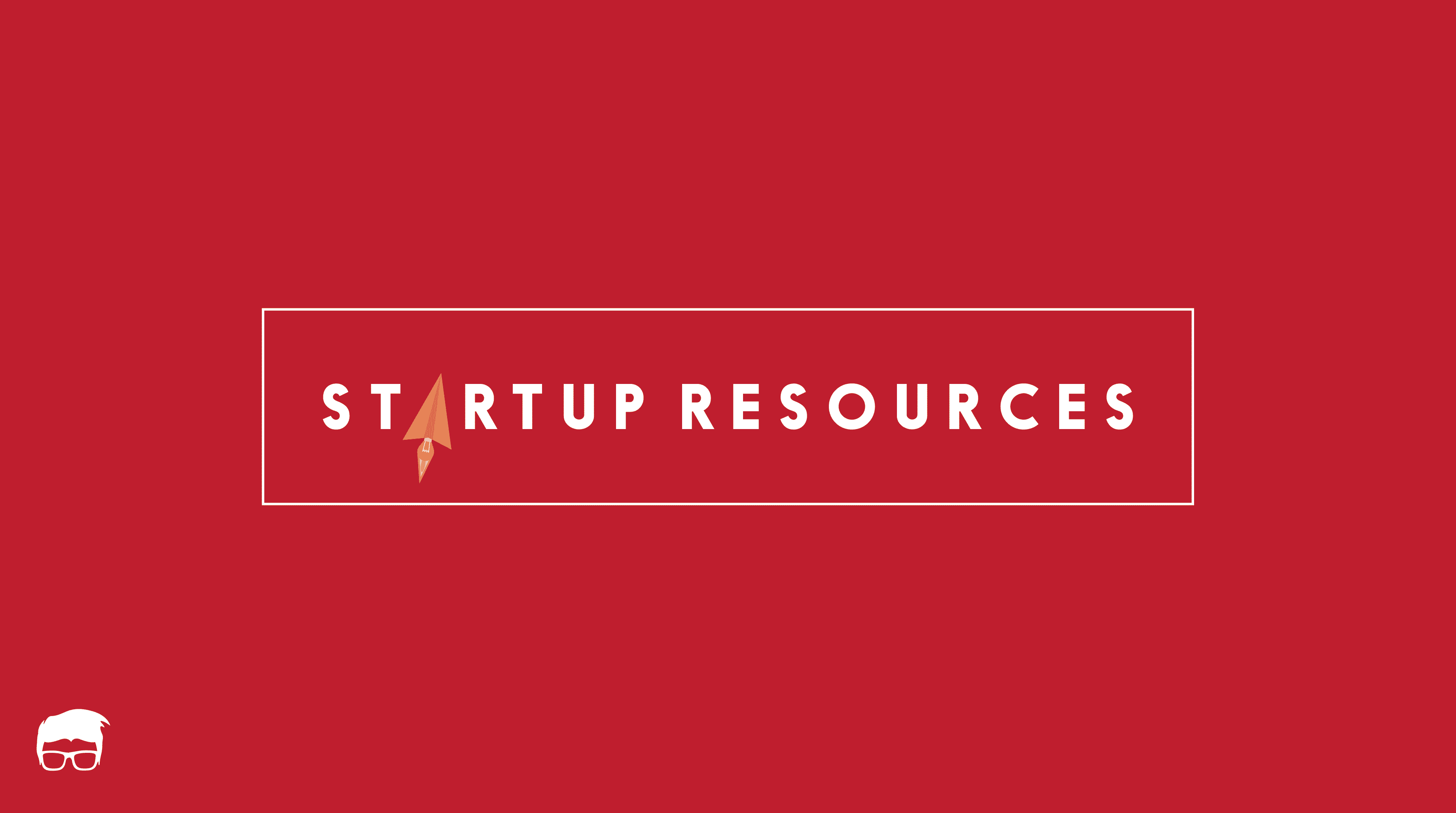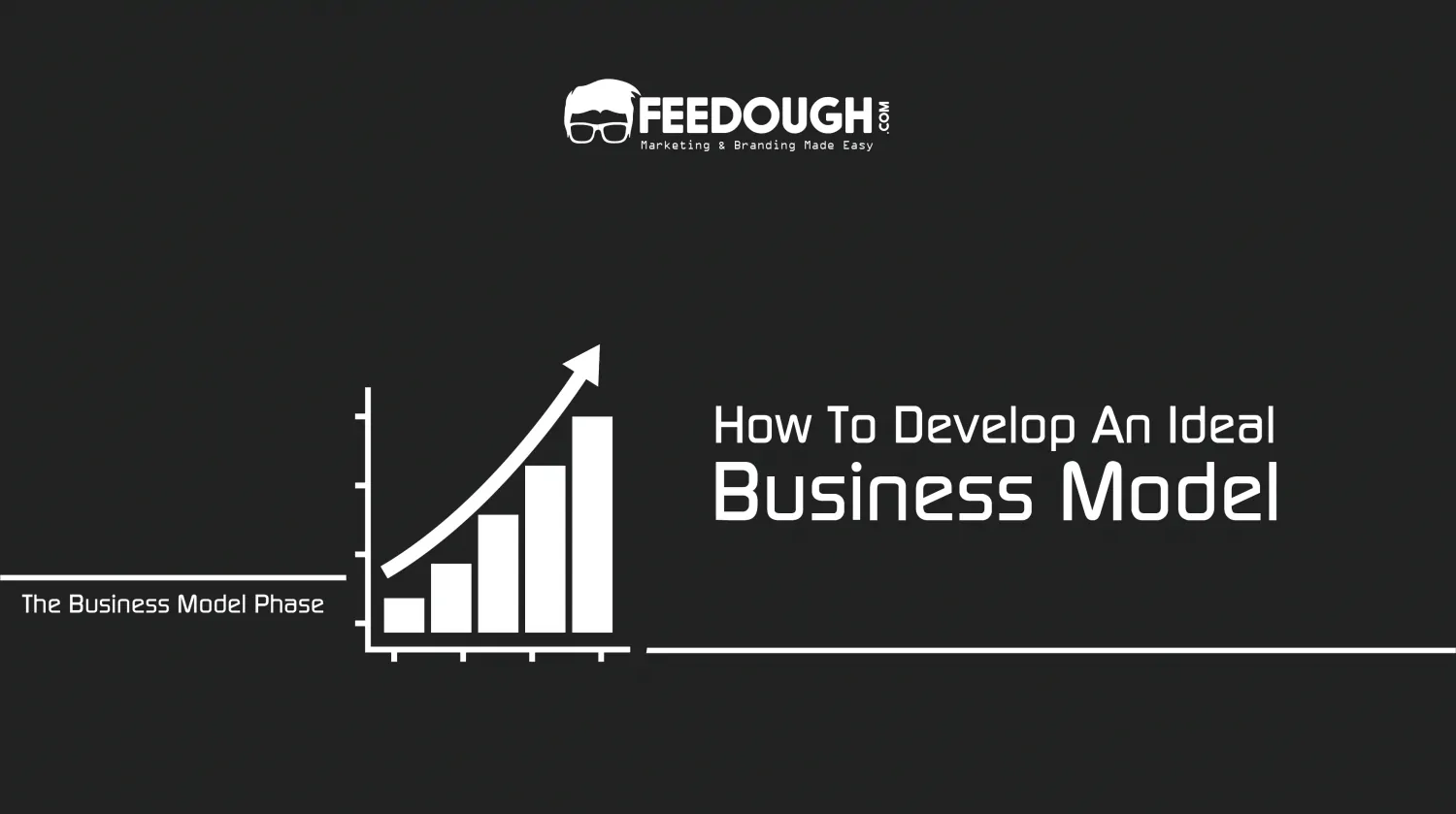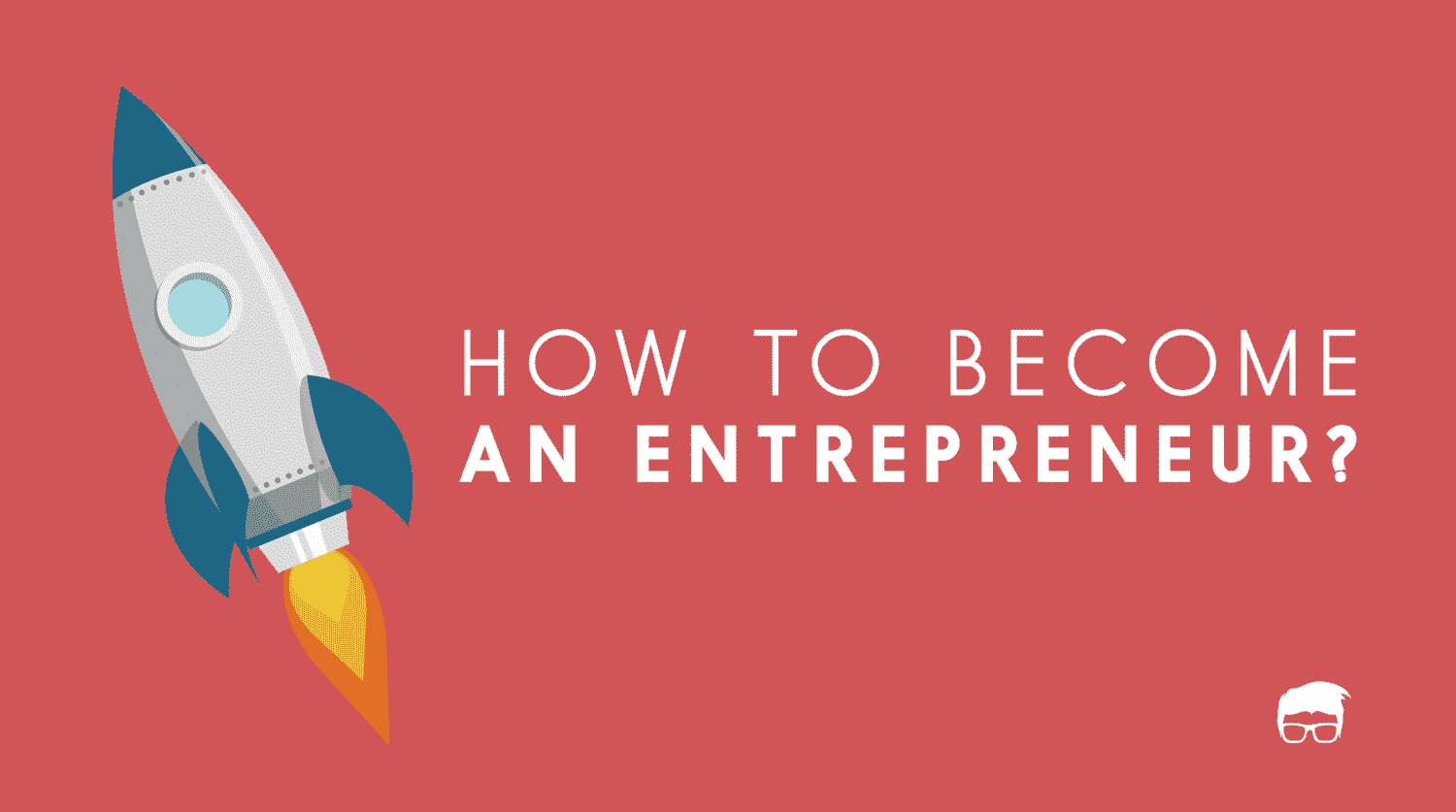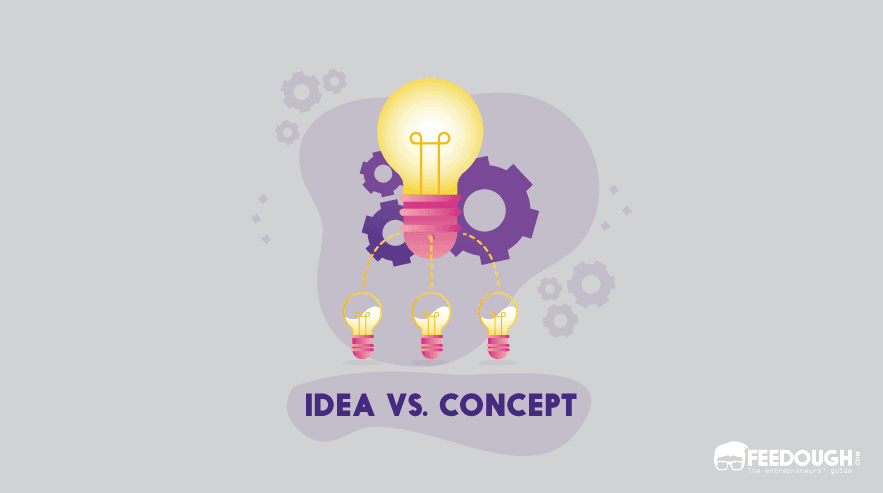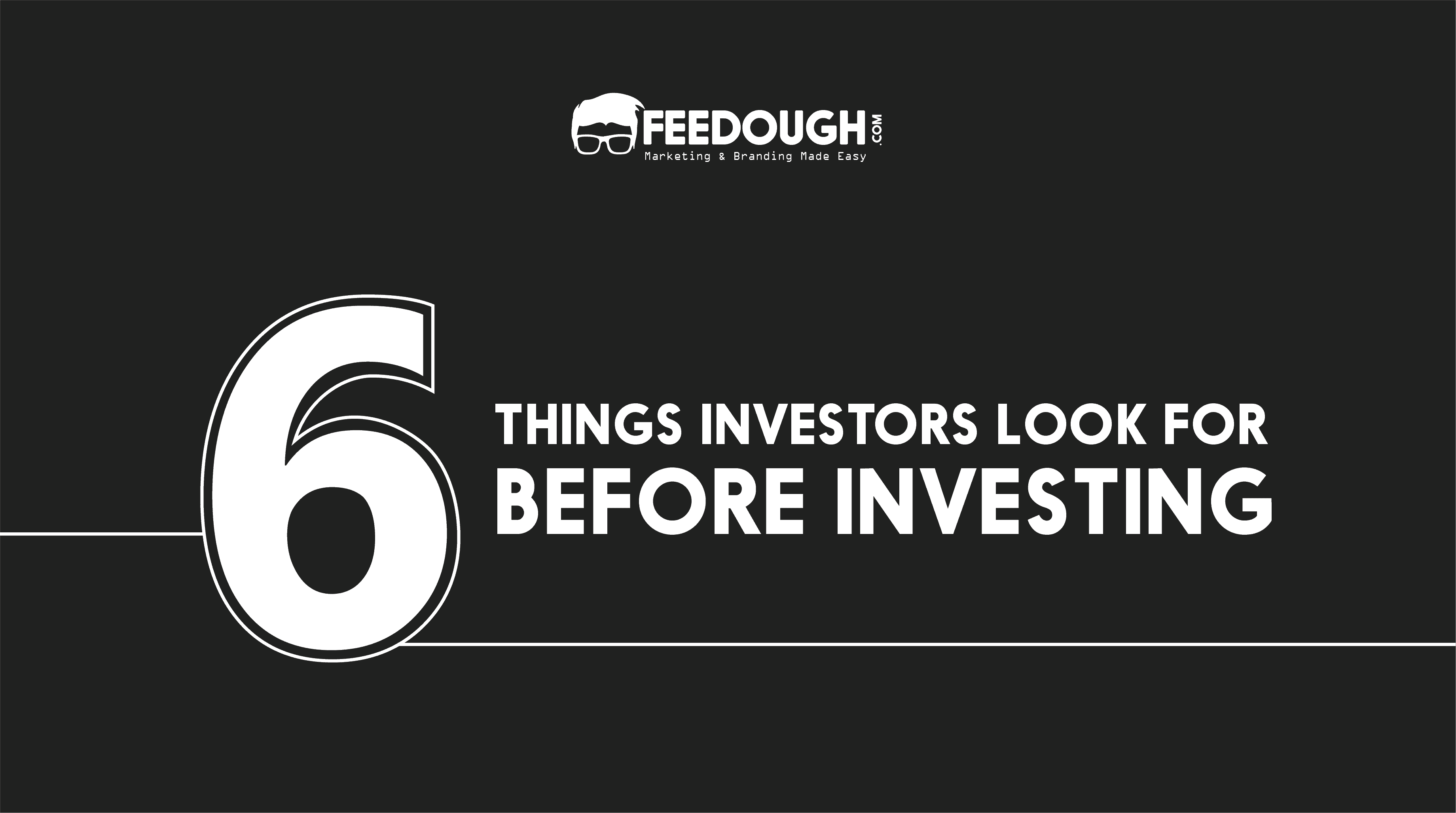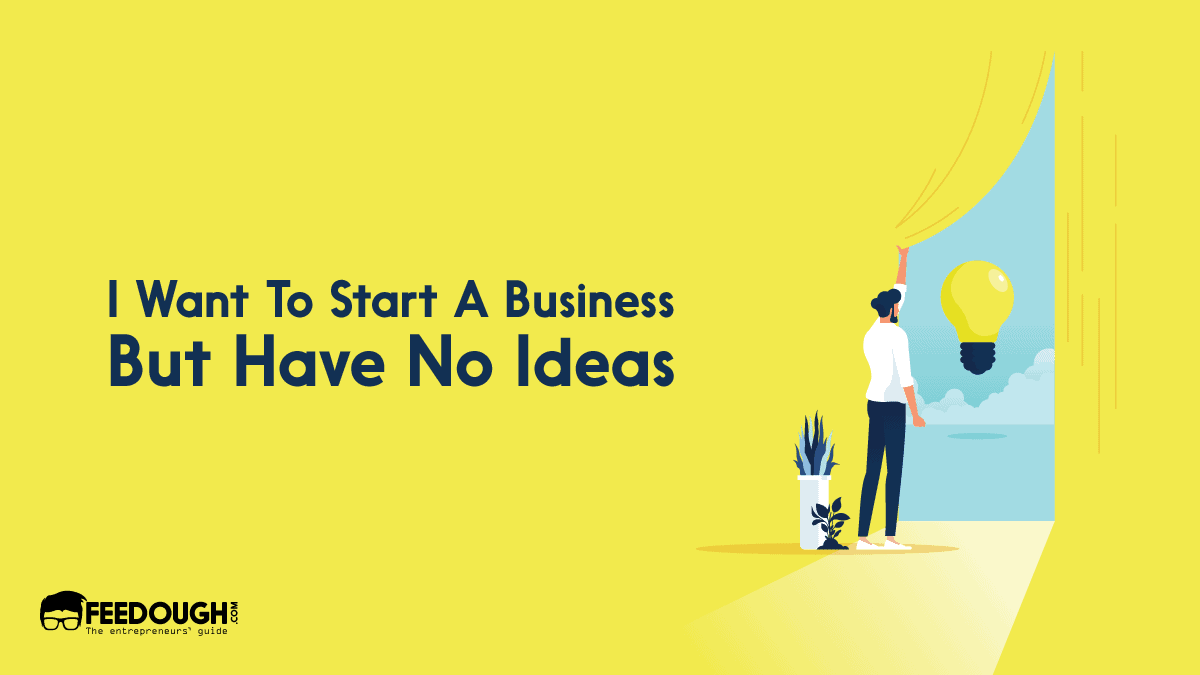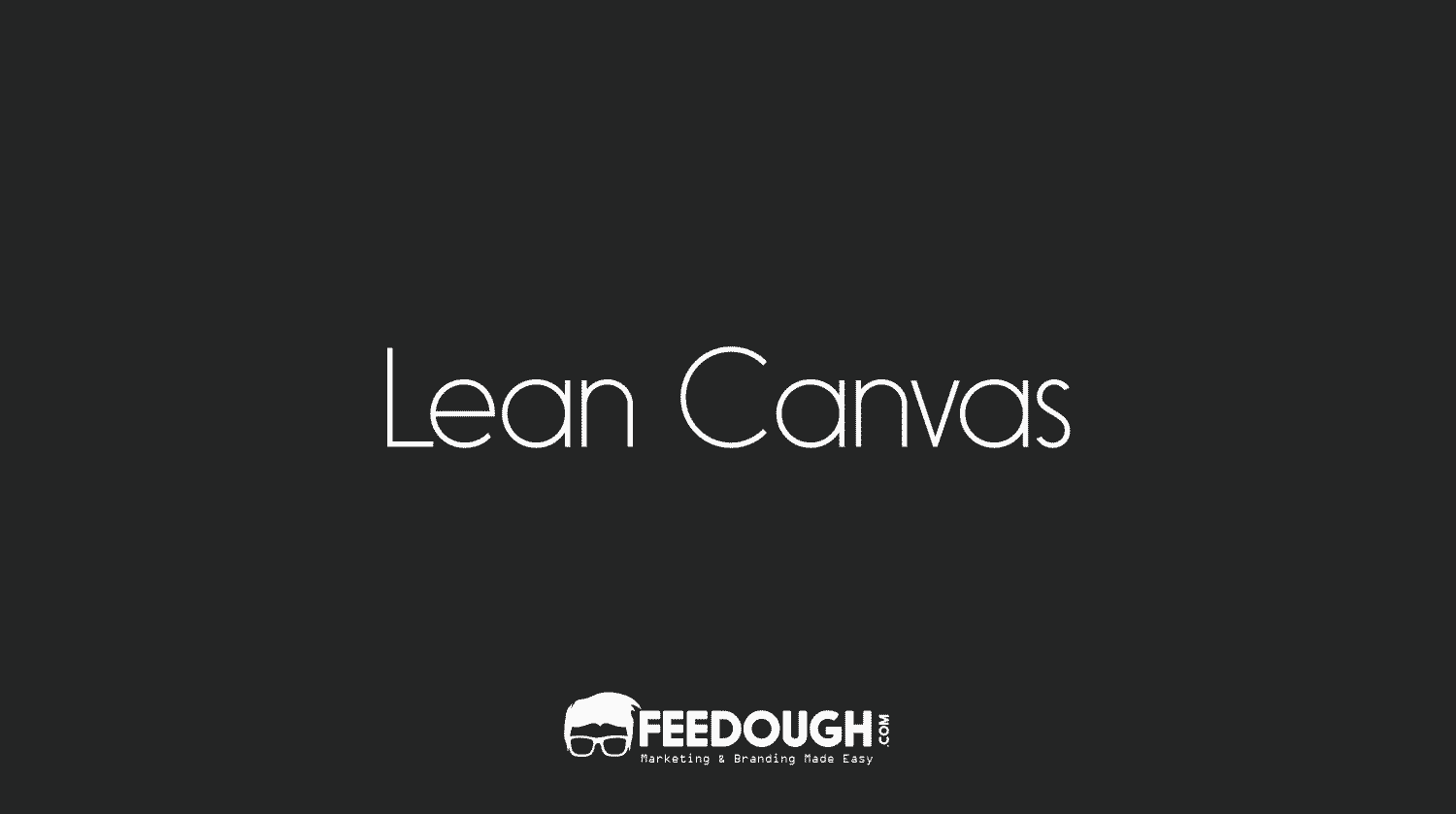Getting a business idea is easy. But converting that idea into a full-fledged business that makes money is the hard part.
Most businesses fail because they cannot make their business model profitable or sustainable in the long run.
This is where the business model canvas comes in.
It is powerful business ideation, modelling, and strategic planning tool that helps you identify how your business will operate and make money. It can be used to manage your existing business. Startup founders can also use it to validate their business idea and minimise the risk of failure before they start their business.
What Is Business Model Canvas?
A business model canvas (BMC) is a strategic management template used to organise and visualise the key elements that go into making a business model work.
In simple terms, it’s a template you fill to visualise –
- Who is your customer?
- What value do you provide to your customer?
- How does your business provide value?
- How does your business operate?
- How does your business make money?
Technically –
The business model canvas is a conceptual structure that supports the viability of the business and explains who the business serves to, what it offers, how it offers it, and how it achieves its goals.
It is an important business development and strategy tool that helps you validate your business idea before spending too much time and effort on it.
Osterwalder’s Business Model Canvas Template
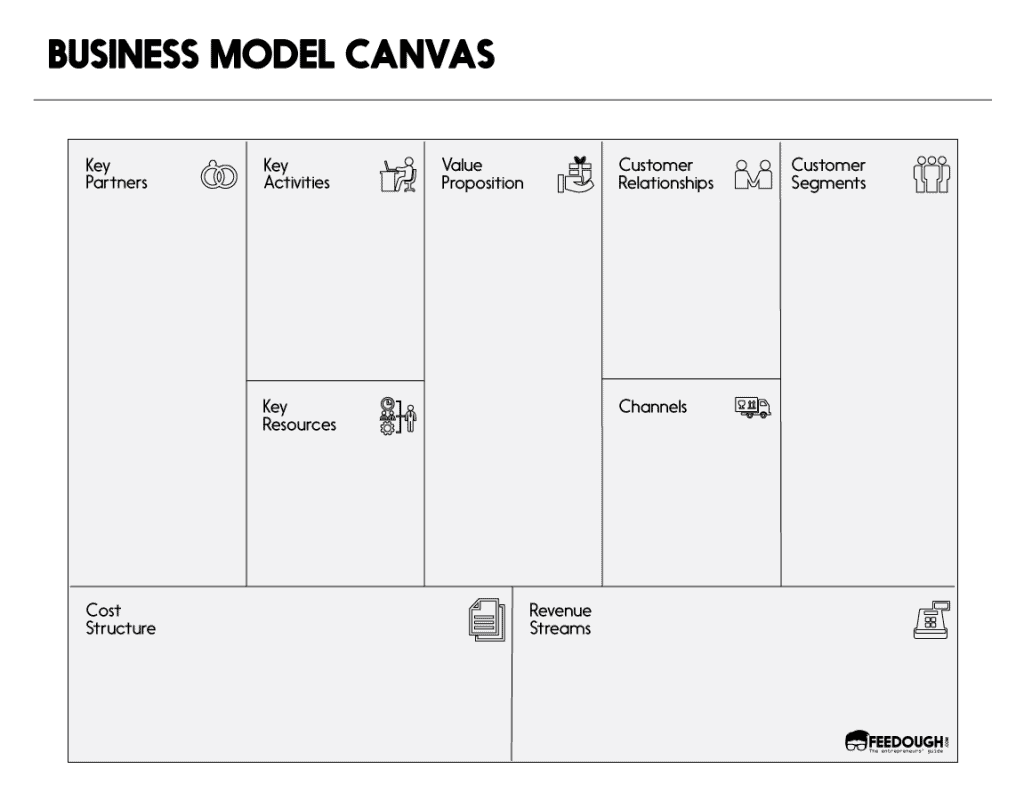
Conceptualised by Professor Alex Osterwalder, the business model canvas is a template used to represent different components of running a business.
Originally published in a business model design book, entrepreneurs and startups have used the business model canvas to help them visualise a broad overview of their businesses.
The business model canvas template has nine major components (or sections), and each section helps answer questions on what, how, and who of your business operations:
- Customer Segments
- Value Proposition
- Channels
- Customer Relationships
- Revenue Streams
- Key Resources
- Key Activities
- Key Partners
- Cost Structure
To download this business model canvas template right click on the above image and select ‘save image as’ or you can click here to get a printable PDF version of the same.
The Components Of Business Model Canvas
The right side of the business model canvas focuses on the customer, while the left side on the business. Both sides come together with a value proposition in the centre to signify the exchange of value between your business and the customers.
Consider the components of a business model canvas as a shared language that helps you describe your business in a structured way. This shared language makes it easier for anyone to understand how your business works, what are its assumptions and dependencies, etc.
Here are the nine components of a business model canvas:
Customer Segments
- For whom do you create value?
- Who are your most important customer or consumer groups?
Customer segments are groups of target prospects with similar needs and characteristics. They are identified based on factors such as demographics, psychographic, behavioural patterns, etc.
For example –
- All the people who live in a particular area.
- All the people with a common characteristic like having a certain age, income, interest in a certain subject, etc.
Your entire business model revolves around your customer. It is therefore very important to understand your customer’s needs and how you are going to provide value for them. This will also help you identify your key segments –
- What groups of customers are most critical to the success of your business?
- What are their needs, wants, and the value they place on the benefits you are offering.
For example –
People living in a particular geographical location (customer segment) will have different needs and wants than people living in another part of the country.
If your target market is women with a high income, your value proposition, marketing and positioning strategy, etc. will be very different from that of a middle-class customer.
Value Proposition
- What solution are you providing to the customer problems you have identified in your customer segments?
- How does your offering make your customer’s life easier?
- What is the value that your customers receive from your offering?
The value proposition is the essence of the customer benefits you offer through your product or service.
It is the main reason customers will buy your product over the competitors’.
Consider it to be the promise of tangible benefits that your customers will receive from consuming or experiencing the offering.
For example –
Starbucks offers an experience in the form of a coffee-shop ambience that allows customers to enjoy premium coffee. Customers buy Starbucks because it helps them relax, socialise, and have quality time in their hectic life.
The value proposition is significant in mapping out your business model canvas because it helps you understand your company’s competitive advantage – what makes your company stand out from the competitors in the eyes of the customers.
Channels
- What marketing, distribution, and sales channels do you use to reach your customer segments?
- Do you serve customers directly, sell through distributors or retailers, etc.?
Channels refer to the path a business takes to communicate with and provide its offering to the end consumer.
They include marketing, distribution, and sales channels.
Channels are the touchpoints your customers encounter as they interact with your business.
For example –
If you run a small coffee shop near a college campus, the best way to reach out to students and prospective customers would be through word of mouth and social media. Your distribution and sales channels may include dine-in, takeaway, UberEats, etc.
However, if you open a coffee cart at a busy place in the city, your distribution channels would be different. You will have to focus on outlets that are frequented by office goers or working professionals – perhaps even vending machines or company canteens.
Customer Relationships
- What relationships do your customer segments expect you to have with them?
- How do you establish such relationships?
- What’s your strategy to get, keep, and grow your customer base?
Customer relationships define the degree of intimacy or intensity of engagement between the brand and the customer, including purchase frequency, loyalty, etc.
For example –
Starbucks forms strong customer relationships by directly communicating with its customers through e-mails. They also offer rewards for frequent customers in the form of free coffee, discounts, etc.
Customer relationships are critical to the success of your business because you will be providing value for your customers through these relationships. When done right, customer relationships can lead to customer referrals and word-of-mouth marketing that is free for you.
Revenue Streams
- What are the sources of revenue in your business model?
- How much do customers pay for your offering?
- What revenue streams contribute to what percentage of total revenue?
Revenue streams refer to how a company generates revenues from its business model.
In other words, it is the way a company makes money through its offering. It includes both primary and secondary incomes.
Primary income is derived from customers who buy your offering. Secondary income comes from other non-core sources.
For example – Starbucks brings in its primary income through regular customers who specifically choose Starbucks over the competition because of their value proposition and customer experience. Their secondary revenue source includes selling coffee beans or merchandise on their online store, etc.
Key Activities
- What activities does your business need to perform to operate successfully?
- What activities does your value proposition require you to perform?
Key activities refer to those activities that help you deliver your value proposition. Planning, organising, staffing, controlling, etc., these activities will keep your business running efficiently.
They are the most important activities that enable your business to run smoothly and provide its value proposition.
For example – Coffee-shop’s key activities would include roasting coffee beans, brewing coffee, managing servers, taking orders, delivering the order to the customer.
For a PC manufacturer, key activities would be designing PCs, sourcing PC components, manufacturing products, offering after-sales services, etc.
Key Resources
- What do you need to have to produce your offering?
- How will you create, deliver, and distribute the offering to your customers?
Key resources are the most important inputs required to create and deliver the promised value proposition, leverage different channels, maintain relationships with the customers, and earn revenue.
It includes elements like
- Human resources
- Property and equipment
- Raw material
- Intellectual property, etc.
For example, to run a coffee shop, you will require human resources in the form of Baristas who can prepare delicious coffee, skilled management to manage the operations, etc. You will need property and equipment such as coffee machines, tables and chairs in the shop for people to sit and enjoy their coffee, etc.
Key Partners
- Which external organisations and individuals enable your business to offer and deliver the value proposition?
- If you don’t perform these activities yourself, who does?
Key partners refer to those organisations and people who play an important part in supporting you in creating and delivering the promised value proposition.
These are alliances with third parties who bring their unique resources, skills or assets to complement yours, which in turn, helps you –
- Optimise your business model
- Acquire better resources
- Reduce costs
- Reduce risks
- Gain access to new markets
For example – Lenovo doesn’t create its own processors. Instead, it partners with Intel to use its microprocessor.
Similarly, a coffee shop may partner with a bakery that can supply them with baked goods on demand.
Cost Structure
- What are the costs required for your business to operate?
- How much has each cost contributed to bringing in revenue?
A company’s cost structure highlights its operating expenses and how they evolved over time. It shows what percentage of revenues goes to different expenditure items like paying employees, buying raw materials, etc.
The cost structure basically summarises a company’s expenses in a particular time period. You calculate it after defining all the other business model canvas elements.
For example – In a given year, a coffee shop may have operating costs, including rent, salary for employees, cost of equipment, etc., amounting to $1,000,000. Their revenue in the same year is $3,000,000. This means that their net income after operating expenses is $2,000,000.
The Importance Of Business Model Canvas
The business model canvas (BMC) is considered an effective strategic tool to develop or modify existing businesses. It helps you to clearly see all the elements of your business model and analyse them for big areas of opportunity.
A clear understanding of what, how and for whom your business will create value is invaluable in making key decisions related to operations, revenue generation, distribution channels, etc.
Here’s why you should always develop a business model canvas for your business –
- Allows you to visualise the different parts of the business model, which is difficult otherwise.
- Enables detailed analysis of all elements that give rise to value creation – the key resources, key activities, key partnerships, etc.
- Helps you identify and segregate value-adding and non-value-adding activities, which in turn helps you cut down on unnecessary costs.
- Provides a clear picture of your business’s revenue model, which helps you identify key revenue drivers and areas that require more focus.
- Provides an understanding of the channels you can use to distribute your products or services.
- Helps you identify gaps in operations, areas where there is scope for improvement etc.
- Helps you identify all possible risks associated with the business model – both external and internal.
- Gives a clear answer to what matters most when it comes to your business – what your business is, how it operates and makes money, who are the key partners to collaborate with, what are the costs involved, etc.
Business Model Canvas Examples
We shall present some examples of Osterwalder’s Business Model Canvas in the following section.
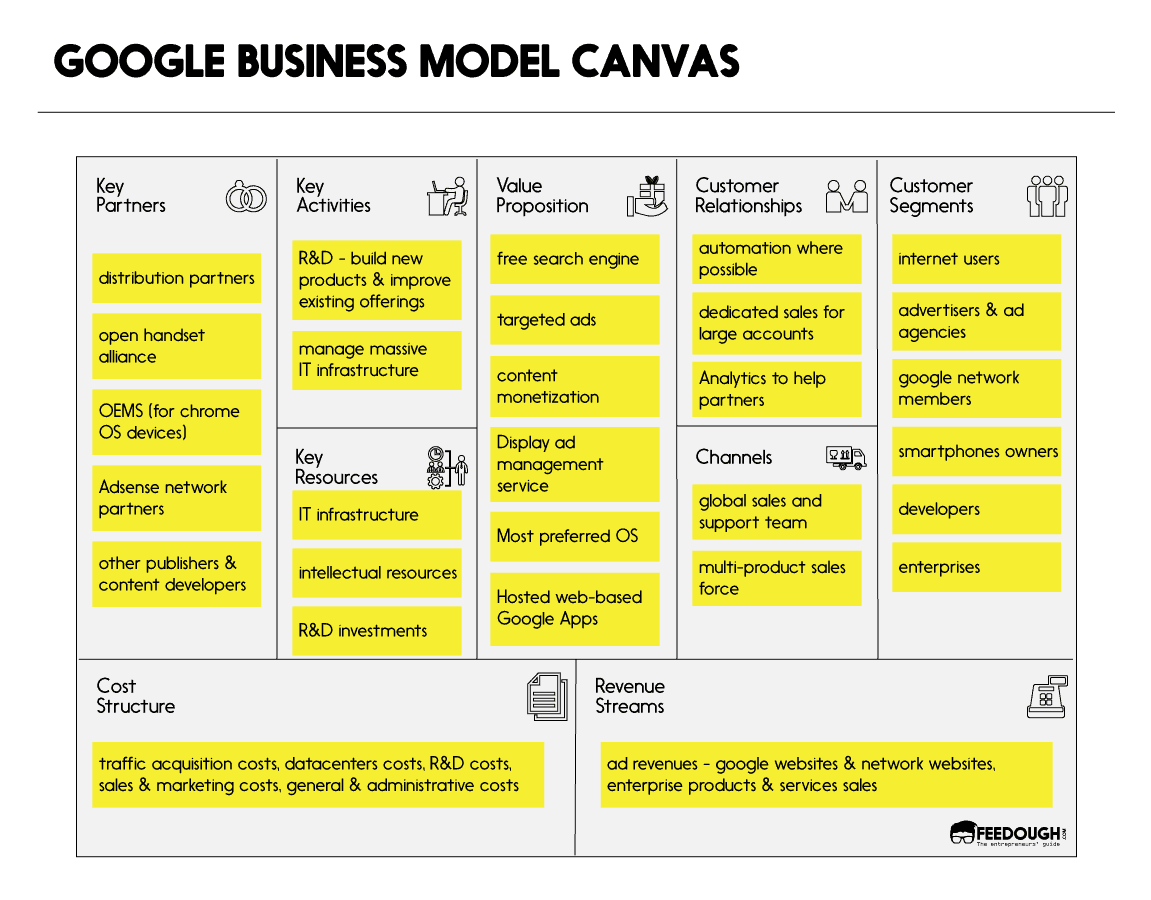
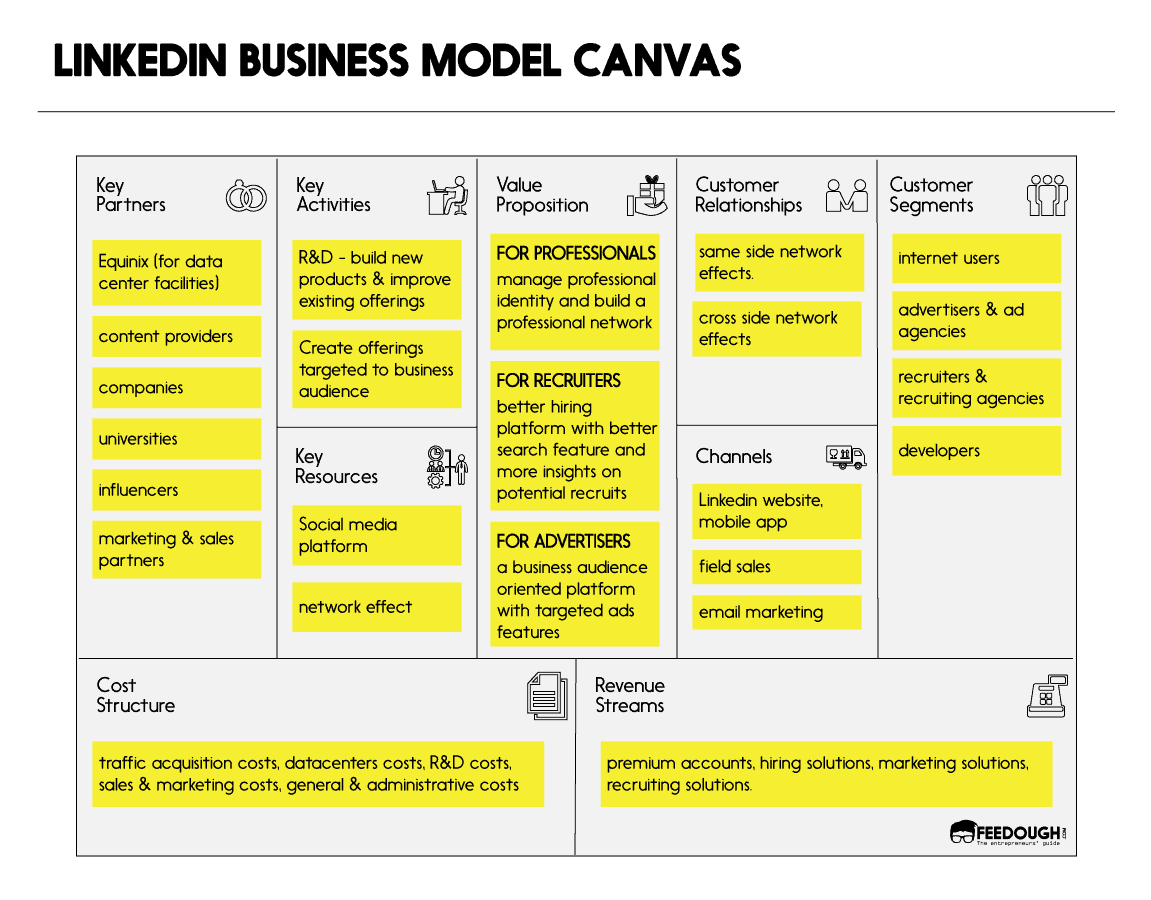
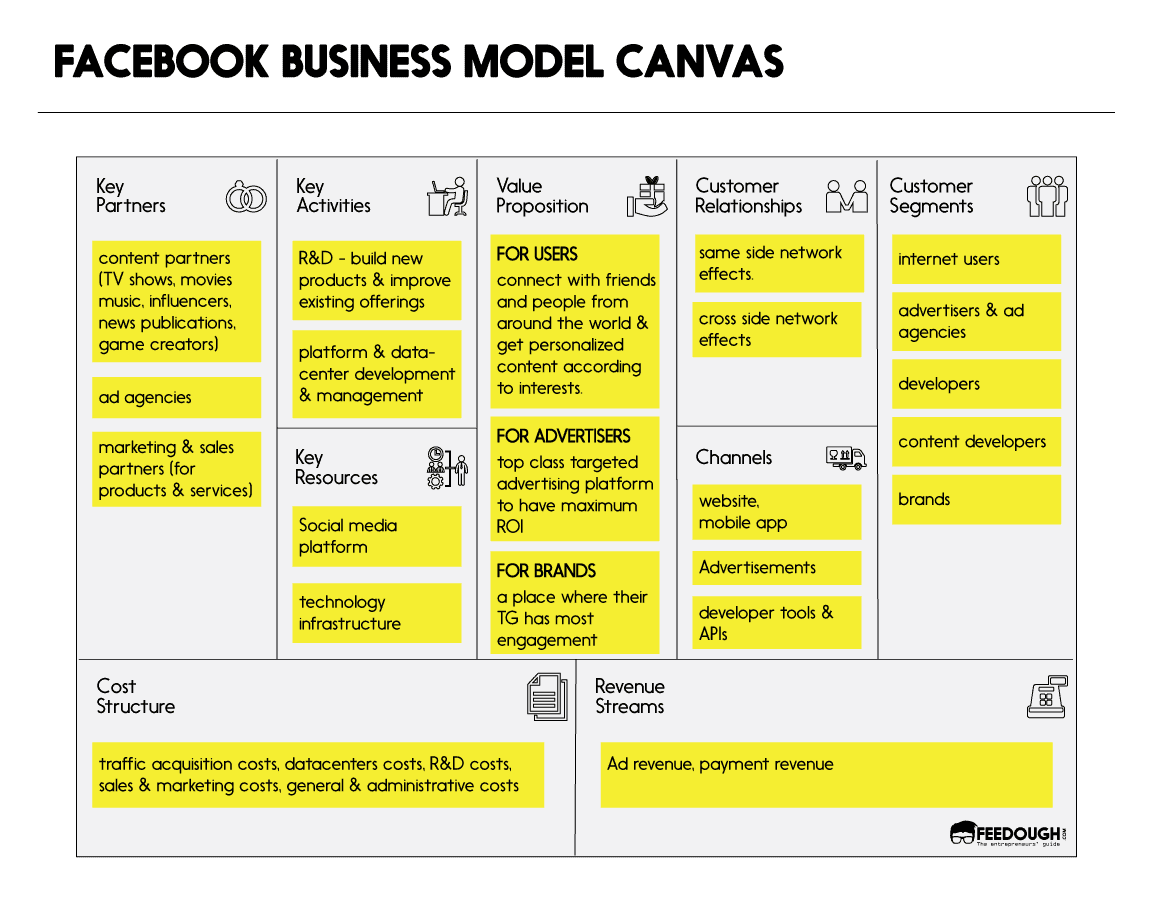
Banks

Bottom-Line?
A Business Model Canvas Is More Than Just An Infographic
Many individuals think of a business model canvas as just another marketing tool or infographic to help present their idea in a more attractive way.
But it’s not just that. It actually helps you gain a comprehensive view of your business.
The objective of creating a business model is to have complete clarity on how your business will create, deliver and capture value. The more clearly you are able to identify, describe and visualise all the elements involved, the better it is for your overall business.
It becomes easier for you to understand the different elements of your business and identify areas where you can improve, innovate or add more value.
The Startup Process
We know how important your dream business is to you. Therefore, we’ve come up with an all in one guide: The Startup Process to help you turn your vision into reality.
A startup consultant, digital marketer, traveller, and philomath. Aashish has worked with over 20 startups and successfully helped them ideate, raise money, and succeed. When not working, he can be found hiking, camping, and stargazing.
